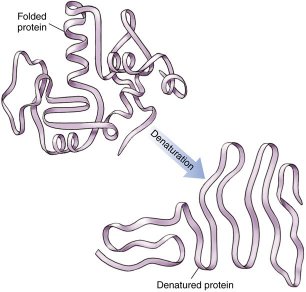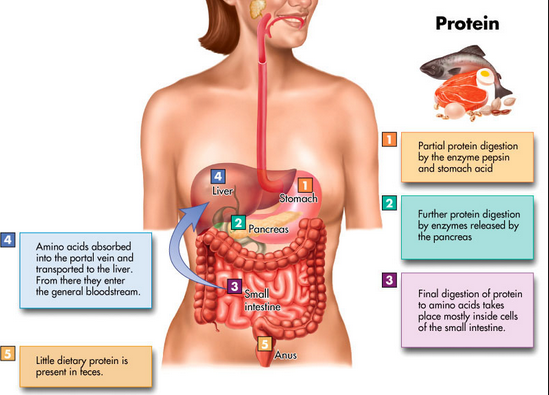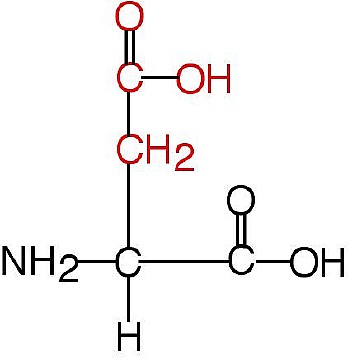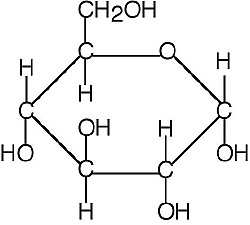VI
Digestion of Protein
The first part of chemical digestion of proteins begins in the
stomach, when hydrochloric acid denatures proteins. Denaturation
is when the protein uncoils and loses its natural shape, like
illustrated below. Keep in mind the protein will no longer
function once it is denatured, remember shape determines function.

Acid is one agent that can denature proteins, but other agents, like heat, can also denature proteins. This is what happens when you cook an egg. The heat uncoils the proteins in the egg. This animation, "Heat Changes Protein Structure: Frying an Egg," demonstrates this. Click on the narrated box (as shown below) to get started with the animation.

Once proteins are denatured or uncoiled, then enzymes have an easier time facilitating the breakdown of proteins through enzymatic digestion. Enzymatic digestion breaks the protein into smaller peptide chains and ultimately down into single amino acids, which are absorbed into the blood.

The proteases and peptidases listed above are enzymes. Enzymes for protein digestion are made in the stomach, pancreas, and intestinal cells. Enzymatic digestion begins in the stomach and ends in intestinal cells.
Below is an overview of protein digestion:

Now we have discussed 3 macronutrients (carbohydrates, triglycerides, and protein). We have discussed where you find these nutrients in foods, if they need to be enzymatically digested, and what is absorbed after enzymatic digestion. Let's practice an application question that you will see through out the term within study questions and exams.
Consider a breakfast of oatmeal, 2% milk, butter and sugar. What needs to be enzymatically digested, and what is absorbed into intestinal cells after digestion?
| FOOD | MACRONUTRIENT NEEDING ENZYMATIC DIGESTION | WHAT IS ABSORBED AFTER DIGESTION |
| oatmeal | starch triglycerides protein |
glucose glycerol, fatty acids, and monoglycerides amino acids |
| milk | lactose triglycerides protein |
glucose, galactose glycerol, fatty acids, and monoglycerides amino acids |
| sugar | sucrose | glucose, fructose |
| butter | triglycerides | glycerol, fatty acids, and monoglycerides |
Notice that both whole foods (oatmeal and milk) have all 3 macronutrients. This will always be the case. The two refined foods do not. Concentrated sugar is just carbohydrate, and concentrated fat is just triglycerides.
Oatmeal would also have fiber, but it is not digested or absorbed.

